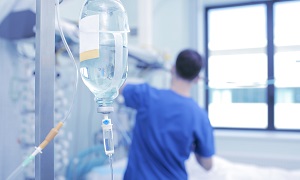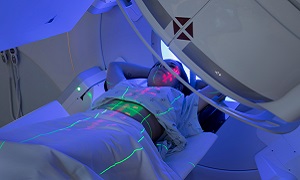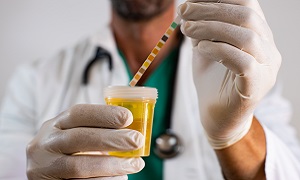Best Non-Hodgkin’s Lymphoma (NHL) Doctors in India
Here are the most reputed Haematologists and Medical Oncologists in India for the treatment of Non Hodgkin’s Lymphoma.
Best Non-Hodgkin's Lymphoma Hospitals in India
- City: Bengaluru, India
Hospital Highlights:
- Fortis Hospital Bannerghatta, Bengaluru was established in 2006.
- The hospital is a 276 bedded multi-specialty tertiary care facility.
- The hospital specializes in cutting-edge medical technology and dedicated patient care services.
- The hospital is equipped with state-of-the-art technologies like trans-radial angioplasty, trans-abdominal cardiac surgery, and computerized TKR navigation surgery.
- The hospital provides specialty medical services in cardiology, cardiac surgery, orthopedics, neurology, neuro-surgery, GI, and Minimal Access Surgery (MAS).
- City: Chennai, India
Hospital Highlights:
- Fortis Malar was established in 1992 and was formerly known as Malar Hospital.
- The hospital specializes in cutting-edge medical technology and dedicated patient care services.
- The hospital is multi-specialty, tertiary care facility with 180 beds.
- The hospital offers comprehensive medical care in specialties such as cardiology, cardio-thoracic surgery, neurology, neurosurgery, orthopedics, nephrology, gynecology, gastroenterology, urology, pediatrics, and diabetes.
- City: New Delhi, India
Hospital Highlights:
- Established in 1996, Pushpawati Singhania Research Institute is one of the top hospitals in the NCR region, as well as one of the top facilities in India for gastroenterology. The hospital is one of South Asia’s first institutes in medical and surgical treatment for diseases related to digestion.
- The hospital is equipped with state-of-the art facilities coupled with the latest equipment as well as renowned consultants from various parts of India as well as other parts of the world.
- City: New Delhi, India
Hospital Highlights:
- State-of-the-art technology and devoted healthcare professionals have been brought together under one roof at Venkateshwar Hospital to provide genuine medical care. The hospital’s professionals work together as a team to deliver the best possible treatment to their patients, using the most sophisticated equipment and information technology.
- Venkateshwar Hospital’s mission is to attain global excellence in healthcare by employing evidence-based, ethical clinical practices and cutting-edge technology by a team of highly skilled experts.
- City: New Delhi, India
Hospital Highlights:
- Sir Ganga Ram Hospital, New Delhi is known to provide the latest medical procedures with the latest technology in all of its units.
- The hospital has a team of reputed doctors, nurses, and healthcare professionals that ensure that patients receive quality care at affordable costs.
- Staffed with a team of highly qualified doctors, dedicated nurses, and paramedical and non-medical staff, the hospital aims to lead in healthcare delivery, medical education, training, and research.
- As per the vision of the founder, the hospital also provides free treatment to the economically weaker sections of society.
- Sir Ganga Ram Hospital also provides training to young doctors under the Diplomate in National Board(DNB) program. The DNB program at the hospital was started in 1984 and it is known for currently running the maximum number of DNB specialties in the country. It also has the distinction of having the first bone bank in India.
- City: Kerala, India
Hospital Highlights:
- Established in 2019, Apollo Adlux Hospital is the first Apollo Hospital in Kerala and the 73rd hospital owned by Apollo Group in India. With the state’s most advanced, comprehensive healthcare infrastructure and cutting-edge technologies, Apollo Adlux Hospital stands as an example of medical excellence in Kerala.
- With over 34 multi-specialty departments, the hospital believes in providing the best quality treatment to its patients at affordable rates, ensuring comfort at their difficult times.
- The 300-bed hospital is managed by a team of highly qualified and experienced experts who delivers exceptional hospitality to their patients and treats them with great compassion.
- With its affiliation with the Apollo Hospitals Group, the hospital aims in providing patients with top-notch healthcare services while also serving communities in Kerala.
- The hospital has good railway and road connections, and is conveniently close to Cochin International Airport.
- City: Gurugram, India
Hospital Highlights:
- Situated near DLF Cyber City, Gurugram, Narayana Superspecialty Hospital is one of the top medical facilities in the Delhi NCR region, catering to the needs of the people. Known for its commitment to quality medical care and patient service, the hospital is a state-of-the-art facility with planned and well-equipped sections, which includes a spacious OPD area as well as comfortable patient rooms.
- It is the closest super-specialty hospital from Indira Gandhi International Airport towards Gurugram, and also the nearest super specialty hospital from DLF Cyber City. It is also close to major residential areas in Gurugram.
- It is part of the renowned Narayana Health Group. Established in 2000, by Dr. Devi Shetty, a renowned cardiac surgeon, it has grown to be one fo India’s leading healthcare groups.
- City: Noida, India
Hospital Highlights:
- Fortis Hospital, Noida, stands as one of the oldest and most trusted healthcare institutions in the region, setting a benchmark for comprehensive medical care.
- As the second mega hub hospital in the Fortis Healthcare Group, Fortis Hospital, Noida, upholds a legacy of trust among more than 1.2 million patients. By integrating top-tier professionals with cutting-edge technology, the hospital delivers superior treatment across various medical disciplines.
- Specializing in advanced Neurosciences, Orthopedics, Kidney and Liver Transplant Programmes, Fortis Hospital, Noida has successfully performed over 1,500 transplants, solidifying its reputation as a leader in specialized medical interventions.
Non-Hodgkin's Lymphoma
Non-Hodgkin’s Lymphoma is cancer originating from the lymphatic system of the human body. The lymphatic system fights the infections and spreads across our entire body. In this disease, the tumors develop from a type of white blood cells called lymphocytes. It is one of the two general types of lymphoma and is more common than Hodgkin’s Lymphoma. A type of abnormal cells called Reed-Sternberg cells help to differentiate between the two types of Lymphoma. These cells are only present in Hodgkin’s Lymphoma while they are absent in Non-Hodgkin’s Lymphoma. The treatment of the disease varies from Hodgkin’s Lymphoma.
Types of Non-Hodgkin's Lymphoma
There are various types of Non-Hodgkin’s Lymphoma. They are:
- B-cell Lymphoma – Reports suggest that around 85% of cases of Non-Hodgkin’s Lymphoma are that of B-cell Lymphoma. Diffuse, large B-cell Lymphoma is the most common type of B-cell Lymphoma. Other types of B-cell Lymphoma are Burkitt’s Lymphoma, lymphoplasmacytic mantle cell lymphoma, marginal zone B-cell lymphoma, extranodal marginal zone B-cell lymphoma, small lymphocytic lymphoma, mediastinal large B-cell lymphoma.
- T-cell Lymphoma – It affects around 15% of the population. It is of two types that comprise T-cells. They are peripheral T-cell lymphoma and cutaneous T-cell lymphoma.
- Follicular Lymphoma – It is a rare type of B-cell Lymphoma.
Causes of Non-Hodgkin's Lymphoma
While some doctors are unaware of the causes of Non-Hodgkin’s Lymphoma, some reports suggest that the weakened immune system causes this cancer. The body produces many abnormal lymphocytes (a type of white blood cell) that cause cancer. The lymphocytes do not undergo the normal cycle in the patient suffering from Non-Hodgkin’s Lymphoma. The lymphocytes, instead of dying, grow and multiply in Non-Hodgkin’s Lymphoma. These abnormal lymphocytes crowd the lymph nodes of the patient, and this causes the lymph nodes to swell.
- B-cells: Non-Hodgkin’s Lymphoma can begin in the B-cells. B-cells produce antibodies to fight germs and infections. These antibodies act against foreign bodies to protect the body. In most cases, cancer arises from B-cells.
- T-cells: T-cells kill the foreign bodies instantly and inhibit them from invading. Only a few cases of Non-Hodgkin’s Lymphoma occur in T-cells.
Symptoms of Non-Hodgkin's Lymphoma
One may find some symptoms that associate with Non-Hodgkin’s Lymphoma. These symptoms are:
- Persistent fatigue
- Unexplained weight loss
- Swollen lymph nodes present in the neck, armpit, and groin region
- Fever
- Chest pain
- Night sweats
- Abdominal pain
- Breathlessness and coughing
- Abdominal swelling
Diagnosis of Non-Hodgkin's Lymphoma
Although your symptoms indicate the presence of abnormal lymphocytes in your body, your doctor might need to perform some tests to form an accurate diagnosis and confirm the disease. Your doctor will ask about the medical history of your family & you and may also take down your personal history. Some tests and procedures follow the history-taking to diagnose Non-Hodgkin’s Lymphoma.
Physical inspection
Urine tests and blood tests
Imaging scans

Bone marrow tests
Testing of the lymph nodes

Treatment options for Non-Hodgkin's Lymphoma
Chemotherapy

Radiotherapy












